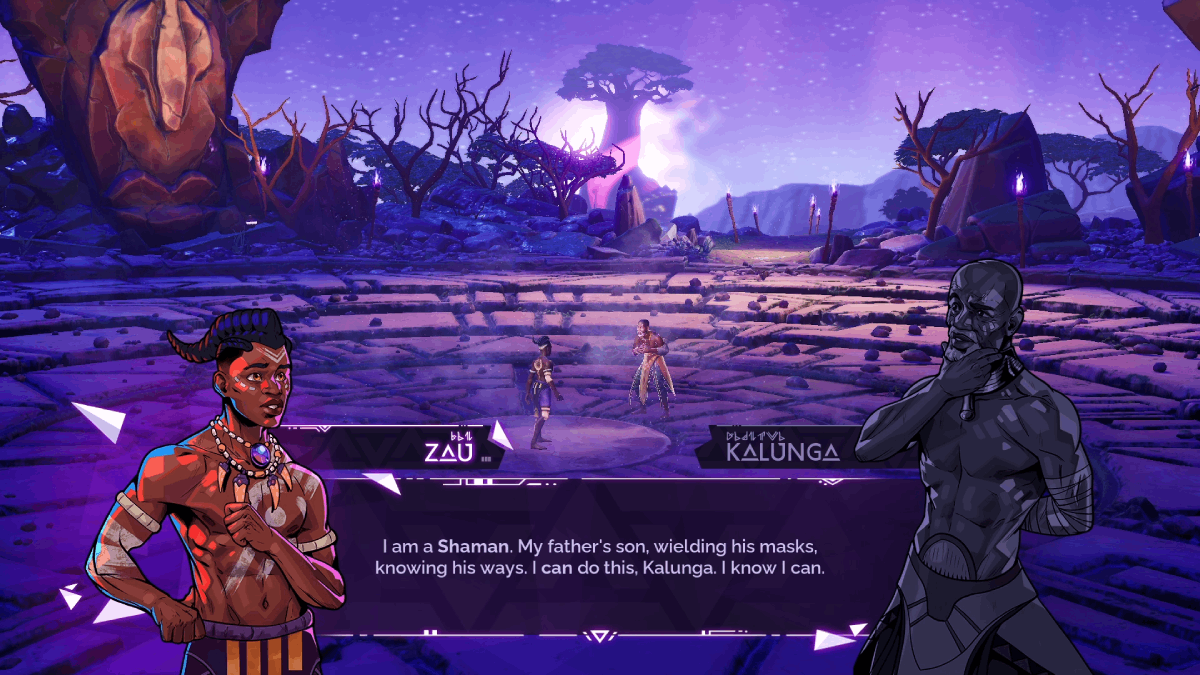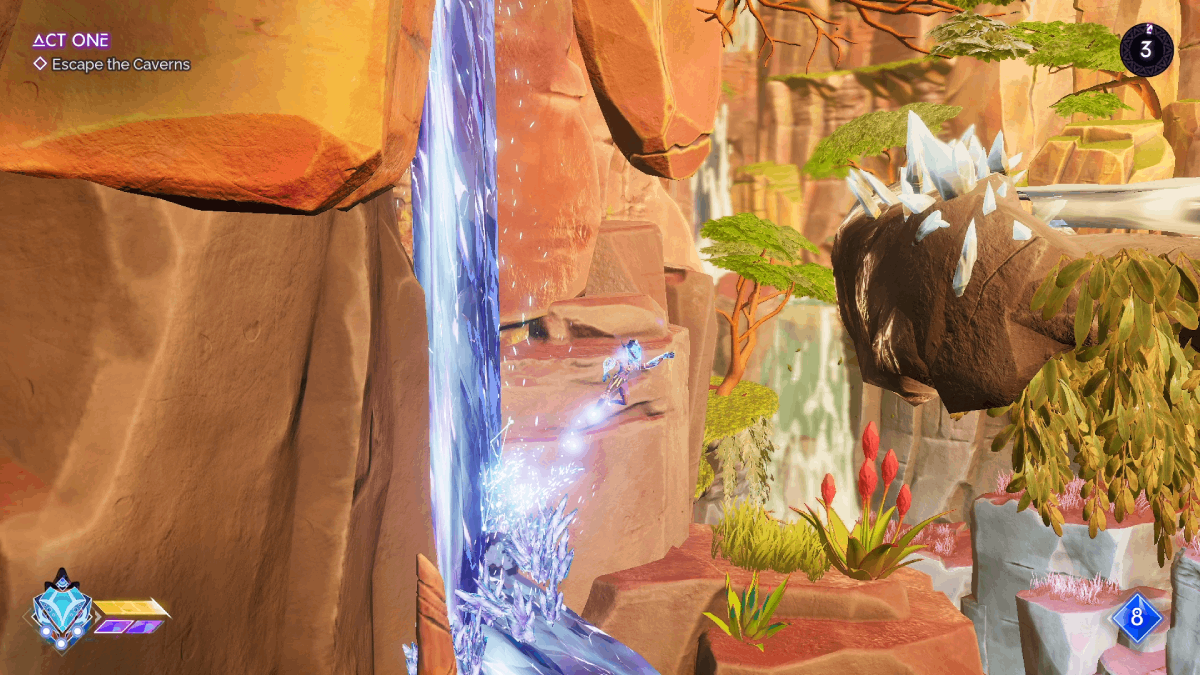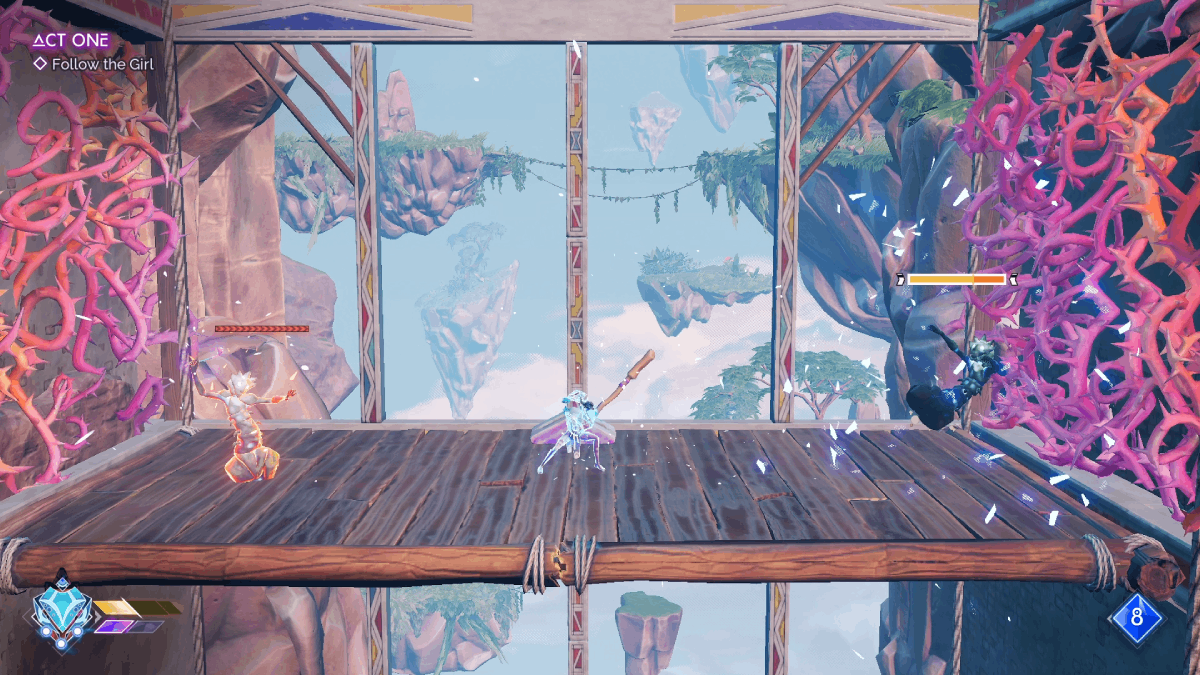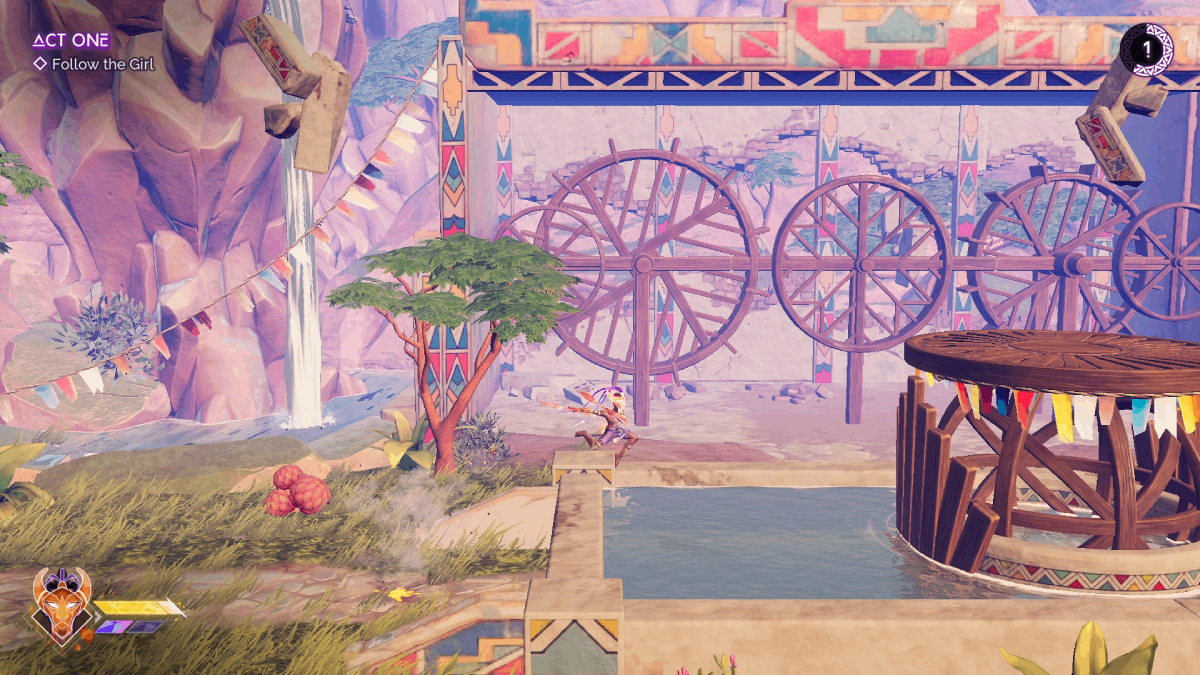The origins of Tales of Kenzera: Zau are unusual. It’s developed by a new studio called Surgent Studios, which was founded specifically to make this game not by a game designer, but by a voice actor.
Abubakar Salim is perhaps best known as the voice of Bayek, the protagonist of Assassin’s Creed: Origins. Following the death of his father, Salim sought out a way to deal with his grief through fiction. Thanks to childhood memories of playing Genesis games with his father, video games became the medium in which he chose to tell his story. Surgent was born, and with it came Tales of Kenzera: Zau.
This backstory is important to understanding what Tales of Kenzera: Zau is all about. Much like the real-life inspiration, the game focuses on someone dealing with the loss of his father. Zau, a shaman within the fictional land of Kenzera, is devastated by the recent passing of his Baba. Out of desperation, he calls upon Kalunga, the god of death, to bring his father back. Kalunga issues a challenge to Zau: seek the three spirits of the land and solve the associated trials, and he will grant his request.

Each of the game’s acts focuses on the quest to find one of these spirits, and along the way the spirit’s story echoes Zau’s own struggles. They each exist to impart a little wisdom on how to deal with the tough emotions that come with losing a loved one. It feels a lot like a series of fables, each designed to pass on a lesson. The setting adds to this feeling, inspired by folk tales from Salim’s Kenyan heritage, told to him as a child by his father.
From the description of the story, you’d be forgiven for thinking this was a pure visual novel or adventure game, focused mostly on story. Instead, Tales of Kenzera: Zau is a Metroidvania, inspired heavily by Ori and the Blind Forest. This influence is heavily present, with fast movement and abilities that gradually culminate in Zau being able to traverse the world as if the floor was made of lava. Which, to be fair, in some parts of the game, it is. There are even large-scale chase sequences, clearly inspired by similar sequences in Ori and the Will of the Wisps.

Moving around Kenzera is a joy. You get a double jump and a dash right out the gate, along with two modes of combat, based on which shaman mask Zau is wearing. Wearing the Mask of the Moon gives Zau a projectile attack and a quick melee move that can be enhanced to bounce projectiles back to enemies. The Mask of the Sun is a pure melee build, where Zau has a short combo of light attacks or a juggling heavy attack. You can switch masks with the press of a single button, and every part of combat feels fluid and responsive. It’s so fun that it did disappoint me there was no style meter like in Devil May Cry, because it absolutely feels like it could use one.
Platforming is also a blast, with each area built as a series of parkour obstacle courses. You’ll hop off walls, air dash over dangers and slide under low-hanging door frames. Each new ability you get adds to this, with a grappling hook, a directional dash, a glide and a way to turn waterfalls into new walls to jump off. Most of the game involves you dashing through platforming challenges that feature a natural flow that’s incredibly satisfying to pull off.

There are issues with how all this comes together, however. Some combat challenges, particularly late in the game, rely too heavily on bombarding you with enemies that require specific strategies to defeat. Trying to concentrate on one tactic for one enemy often leaves you open to attacks from another, which does occasionally get tiresome.
Progression is also a little too linear. Metroidvanias typically have a sweet spot between linearity and open-endedness. While I’ve recently criticised Biomorph for being too open, Tales of Kenzera swings too much in the opposite direction. You are often on a fixed path for most of the game, with many of the typical genre concessions focused on one or two extra collectibles within a given area. While it was not generally an issue because of how much fun the game is to play, it did remove a lot of the fun of exploration. Mostly because it barely existed.
There are also occasional moments when controls aren’t quite as fluid as they could be. While most games will allow you to hold a direction as a cutscene is coming to an end, allowing you to get moving immediately, Tales of Kenzera does not, leaving multiple moments where Zau simply didn’t move. The automatic ledge grab can also sometimes get in the way while navigating tight spaces, particularly when breaking through walls in later parts of the game. Whether this was a quirk of the review copy that will be fixed for the final release remains to be seen.

However, these flaws end up being forgivable for how deeply personal this game feels. There’s a moment at one of the game’s various meditation spots where Zau reflects on the last night of his father’s life. Unsurprisingly, Abubakar Salim voices Zau himself, and in this moment, it feels like he is recounting his own father’s final moments. The performance is powerfully raw and intimate, like he’s confiding in us during a quiet moment. Salim built an entire studio to make this game, all to deal with the grief of losing his father. While the game may have some flaws, moments like this show the passion behind the whole project. This game is not only a success for its creator to deal with his own emotions, but to hopefully help anyone else dealing with similar circumstances see themselves in Zau’s struggles.
Tales of Kenzera: Zau is a beautiful little game. Fun platforming and a setting we rarely see in games both support a genuinely moving story of grief. While it is a game about the acceptance of death, it’s also about the joys of life. And just like life, it’s a little rough around the edges and can be frustrating, but ultimately worth it.
Tales of Kenzera: Zau will release on the PC, PS5, Xbox Series X, and Switch on April 23, 2024.